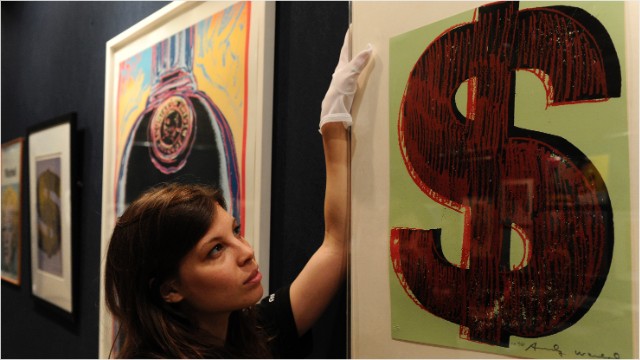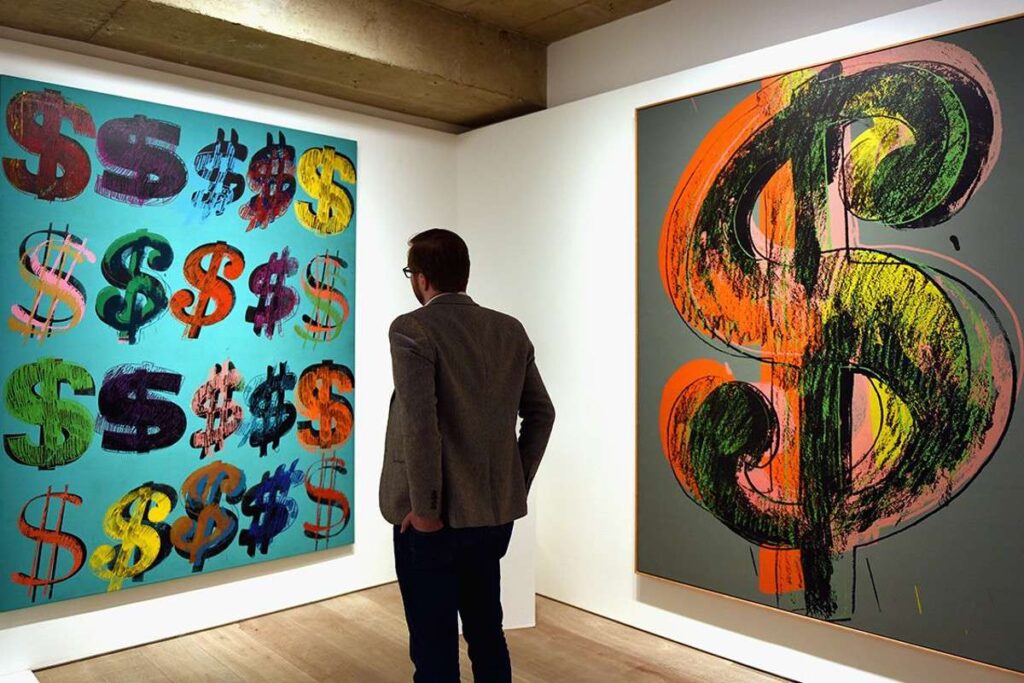
It’s mid 2022, and as many experts have predicted, the massive asset bubbles created by loose monetary policy and wild speculation are starting to pop. And even more devastating, the value of your precious NFTs are cratering day-by-day, along with all your other crypto assets. So now the essential question becomes…where can we park our cash, get a decent yield and still come out ahead in this environment. What about fine art?
And no, I am not referring to digital art projects being sold on the far corners of the dark web (although fine art is increasingly being digitized). I am referring to the OG art investment. Paint to canvas….beautiful brush strokes…..something you hang on your living room wall….fine art. Well good news, the fine art market is more accessible than it ever has been. And with the right guidance, and a little bit of luck, maybe you could be pocketing big on your pastels.

Characteristics of the Fine Art Market:
Fine art investing, like almost all investing, is an exercise in risk management and due diligence and all the traditional financial advice still applies. However, there are a few peculiarities you should consider. First, fine art investments typically have low correlation with other asset classes. This makes them particularly attractive for risk averse investors looking for the ultimate diversification tool and also for someone looking to keep money “relatively” safe during a market downturn. Secondly, the arr market is surprisingly large and its growth was going into overdrive before the Covid Pandemic. In 2018, the Art Basel annual report estimated that the global art market reached $67 billion in annual sales. The pandemic cut that to $50 billion in 2020, but the market largely recovered to $65 billion in 2021. Thirdly, remember that with only a few notable exceptions this is largely an illiquid asset class that requires a little more patience than is typical of holding stocks and bonds. Fourth, and this should be no surprise, but fine art investment is inherently risky. The general art market has its up and downs and a lot of the price swings for individual pieces of art depend on the original artist’s reputation and the state of the overall economy.
Now, let’s really get granular and delve into the two big, general categories of fine art investing” Art Equity Investment / Art Debt Investment.
Art Equity Investments:
Art equity investing is basically investing in fine art with the expectation that it will increase in value and you can profit from the sale of that appreciated artwork at some later date. If you have ever bought and sold a home that built equity overtime, you’re already familiar with the concept.
In general, there are two ways to invest in art equity. First, there are art equity funds, which are financialized pools of art work.These art equity funds seek to mitigate the risk of owning and depending on the appreciation of one or a few art pieces. And next there is the much, MUCH more involved task of owning individual pieces of art.
Investing in individual pieces is not for the faint of heart. You will have to become familiar with a whole new world and a whole new lingo that goes along with it. For instance, while the original artworks by the original artists are clearly the most rare / most valuable pieces in the artworld; there is some value in high-fidelity prints (called glicees) of the original work. Some glicees have commanded selling prices that are up to a third the price of the original. Even lower quality prints of an original artwork can have significant monetary value as long as those prints are limited edition runs or if they have been signed and numbered by the original artist. Posters, unsurprisingly are considered the lowest value copy of an original artwork and you shouldn’t expect to see any return on your money. Again, because rarity the main determinant of price, the typical poster has such a wide distribution that it dilutes any value in the artworld.
Costs of Ownership:
Now that you’ve purchased your beloved Picasso, the costs don’t stop there. No my friend, in order to keep your artwork’s appraised value high, you will need to pay for proper maintenance and storage. And should your art piece get damage, the cost of restoration can range anywhere from $800 to $25,000 depending on the degree of damage.
Given this reality, some art collectors find creative ways to offset these costs. For instance, if they have an art piece with an absolutely stellar reputation, they may have the option of renting that piece out to a museum or art gallery. This way they can monetize this otherwise illiquid asset for period of time.

Art Debt Investments:
This is probably the most financialized part of the art investing landscape. Essentially, all investments in this space are tied to art-backed loans, Quite often these loans are coupled in the form of funds, portfolios and even art etfs. Investors in these financial vehicles typically earn a return that is tied to interest payments made on the art-backed loan. Additionally, it is common practice that art-backed loans are made at 50% of an art piece’s value. This gives a 50% investment cushion to the loaner and all associated investors. For these reasons, art debt investments are considered to be generally safer than art equity investments.
Fractional Art Investing Platforms:
Within the last decade, a new type of art investing has emerged and it has the potential to open up art investing to the masses in a big way. Fractional art investing seeks to securitize art assets themselves and sell fractions of this securitized asset to investors. There are a number of emerging platforms in this space but let’s briefly breakdown the process of the market leader.
Masterworks is a fractional art investing and research platform based in New York. In order to securitize and sell fractions of a single piece of art it basically creates a Delaware-based corporation and registers it with the SEC. The corporation then buys a work of art after which point the company is chopped up into thousands of shares. These shares are sold to individual investors based on the appraised value of the original artwork.
Other fractional fine art investing platforms include but are not limited to Yieldstreet, Maecenas, Otis (which has recently be acquired by Public.com) and many others. Yet, you should also keep in mind that many of these platforms limit some or all of their investments to Accredited Investors (an investment class as defined by SEC rule 501 of Regulation D).

Final Notes:
As stated before, fine art investing is a world unto itself. While this investing landscape may be a little less volatile that say NFTs; it should be approached with caution and due diligence. If you have the money, resources, time, energy and love for contemporary art (*returns on contemporary art sales have outperformed the S&P 500 over the past 40 years); then maybe investing in individual art pieces is right up your alley.
Otherwise, consider using the technological advances that are seeking democracy in the art investing space (fractional art investing, art etfs, art mutual funds). Either way, don’t take on more risk that you can handle.